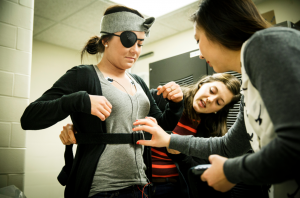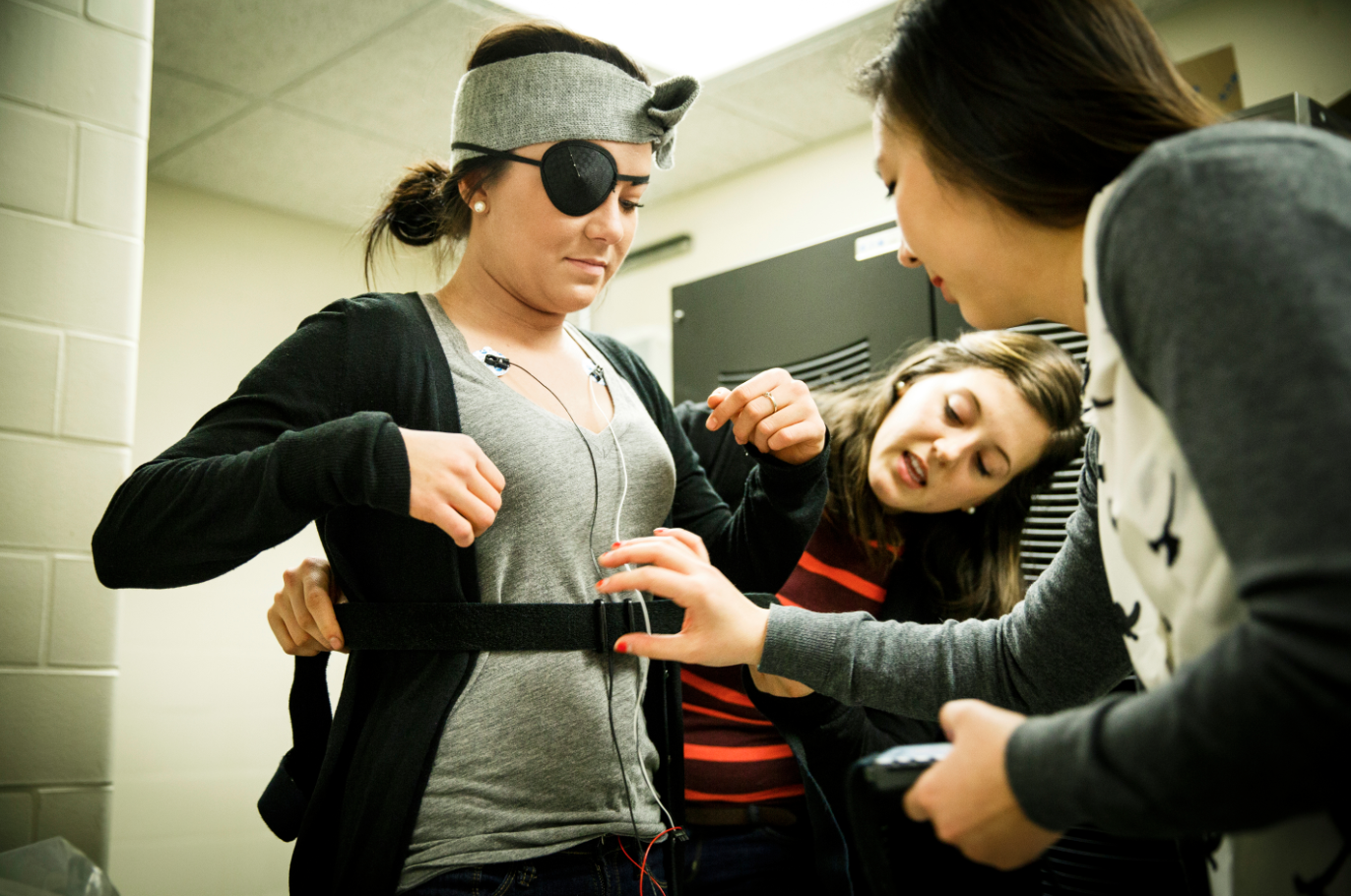Imagine being thrown into a pitch-black room, the door slammed shut and locked behind you, and you’re forced to cope with the unfamiliar darkness all around you.
Now imagine being thrown into the same room, except this time the room is comfortably lit.
That’s what St. Thomas graduates Grace Vo, Megan Coffman and psychology professor Sarah Hankerson sought to investigate as part of a study on people’s fear of darkness in relation to a concept called the “Pirate Theory.” Results found the use of an eye patch can make people feel more comfortable in dark settings, similar to pirates.

“The whole principle is that pirates used an eye patch so that when they were in the light and had to go down into the dark to fight, they would be able to switch which eye they were using,” Hankerson said. “The eye that was covered would be adjusted to the dark.”
Hankerson said the idea came to her while she was watching a “MythBusters” episode that explored the theory.
“I was interested in taking that further and think about how fear of the dark could be affected by whether or not you have an eye that was adjusted for the dark,” she said.
Coffman said the experiment involved subjects wearing eye patches, attaining a dark-adapted eye and navigating through dark spaces. She, Hankerson and Vo measured anxiety responses and compared them to a control group that didn’t have a dark-adapted eye.
Last fall, 70 St. Thomas undergraduate students – 49 females and 21 males – were recruited to participate in the study. Each student was hooked up to a heart rate monitor and a breathing monitor and tested sweat and anxiety levels. Researchers also took a saliva sample from each student to measure cortisol, a hormone that indicates one’s nervous system activity.
The subjects had to solve a small puzzle in a dark room. When the students came out of the room, they were asked whether they were nervous or scared of the dark. The most interesting finding was the additional saliva sample after trying to solve the puzzle, according to Hankerson.
“We found a significant change in cortisol for those that did not have an eye patch. Their stress hormone went up compared to people that did have the eye patch,” Hankerson said.
So far, little research has been done on the “Pirate Theory.”
“The dark has been used before in studies as a fear response or a stimulus to cause fear, but we could not find anything where people were studying people in the dark and whether or not that caused fear response,” Hankerson said.
Vo and Coffman are currently working toward publishing their findings.
“It’s really crazy to look back and see how a simple question can unfold,” Coffman added.
Margaret Murphy can be reached at murp6449@stthomas.edu.

